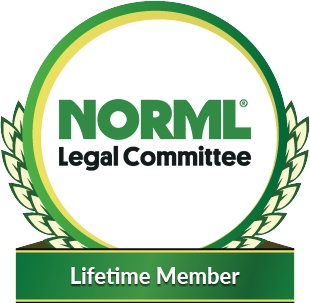The “Career Criminal” in Florida
Law enforcement agencies in Florida have procedures for targeting individuals who meet the criteria for enhanced prosecution under the Federal Armed Career Criminal Code or Florida State Statutes.
Officers point to criminal justice studies that reveal that approximately 6 percent of the so-called “habitual offenders” commit approximately 70 percent of all violent crimes.
With these statistics in mind, law enforcement officers reason that by targeting habitual offenders for enhanced prosecution techniques so that they receive long-term prison confinement, a significant reduction in crime will result.
Attorneys for the Violent Career Criminal Statute in Tampa, FL
Florida law provides for statutory enhanced penalties those designated as a Violent Career Criminal (VCC) under Florida Statute Section 775.084(1)(d) for offenses committed on or after October 1, 1995.
For more information about certain statutory enhanced penalties under Florida law, contact an experienced criminal defense attorney at the Sammis Law Firm. Our offices are located in Tampa, Hillsborough County, FL.
Call (813) 250-0500.
Requirements of the Violent Career Criminal (VCC) Statute
Under the statute, the Court must make three findings before finding that the Defendant qualifies as a Violent Career Criminal including:
- Three or more previous separate adult convictions, which have not been pardoned or set aside in post-conviction proceedings for an offense in the state of Florida or other qualified offense that is:;
- Any forcible felony described in Florida Statute Section 776.08:
- Aggravated stalking under Florida Statute Section 784.048(3) and (4);
- Aggravated child abuse under Florida Statute Section 827.03(2);
- Aggravated abuse of an elderly or disabled adult as described in Florida Statute Section 825.102(2);
- Lewd, lascivious, or indecent conduct as described in Florida Statute Section 800.04;
- Escape as described in Florida Statute Section 944.40; or
- A felony violation of chapter 790 involving the use or possession of a firearm.
- The Defendant has been incarcerated in a state prison or in a federal prison.
- The offense for which the Defendant is to be sentenced is an enumerated offense committed on or after October 1, 1995, and;
- While serving a prison sentence or other commitment or supervision imposed for prior conviction for an enumerated offense; or
- Within five (5) years of conviction or release from a prison sentence, supervision, control release, parole or other commitment for a prior enumerated offense, whichever is later.
Disclaimer: This summary does not explain every aspect of enhanced penalties in felony cases. Instead, the summary is intended to provide general information that might act as a starting point for further research.
Federal Armed Career Criminal
As defined by Federal Criminal Code, Title 18, §924(e)(1), an Armed Career Criminal is an individual who:
- Is a convicted felon in manual or constructive possession of a firearm or ammunition.
- Has three or more convictions by any court for violent felonies, serious drug offenses, or both, committed on separate occasions from one another.
The term “violent felony” means any crime that represents a serious potential risk of physical injury to another including:
- any crime punishable by imprisonment for a term exceeding one year, or any act of juvenile delinquency involving the use or carrying of a firearm, knife, or destructive device that would be punishable by imprisonment for such term if committed by an adult, that;
- has an element, the use, attempted use, or threatened use of physical force against the person of another; or
- constitutes burglary, arson, or extortion; or
- involves the use of explosives.
The term “conviction” includes a finding that a person has committed an act of juvenile delinquency involving a violent felony.
If convicted in Federal Court as an “Armed Career Criminal,” the offender shall be sentenced to imprisonment for not less than 15 years, and a fine of no more than $25,000.00, with no probation or parole.
This article was last updated on Friday, May 25, 2018.














